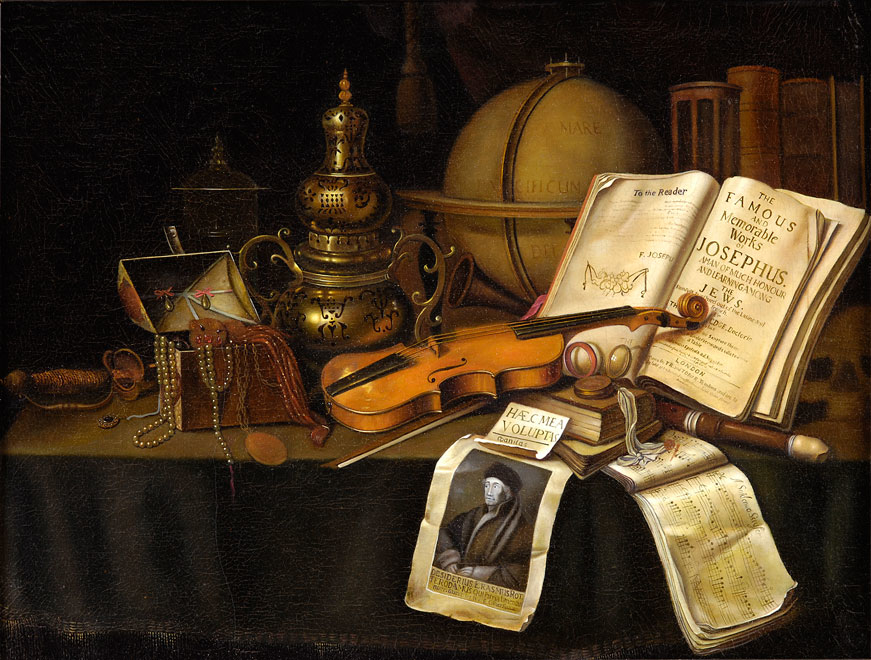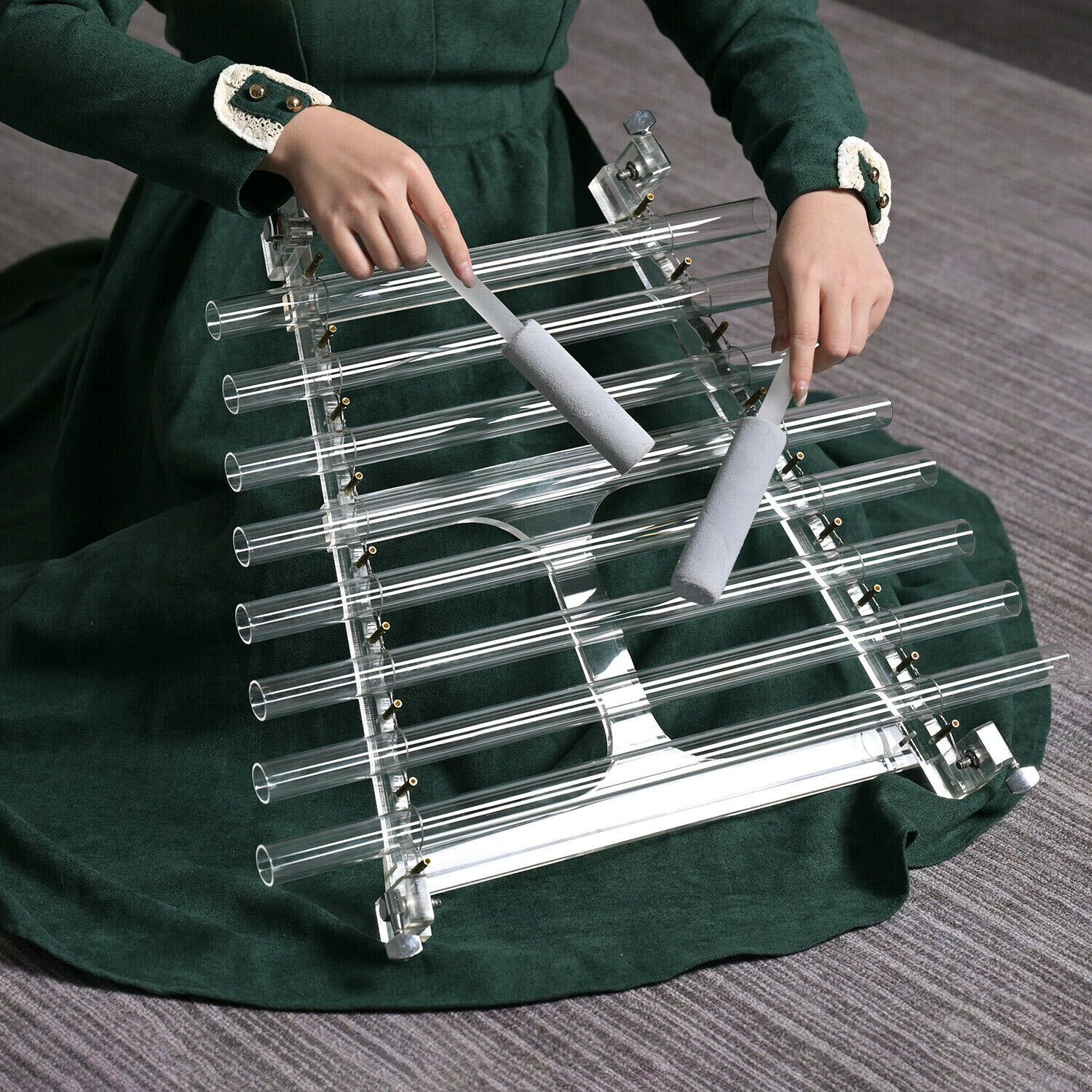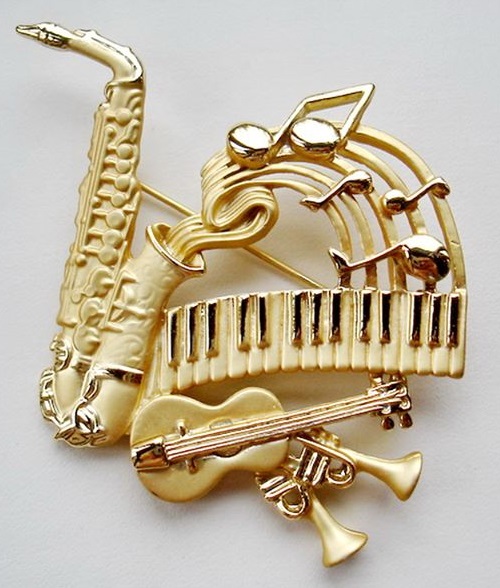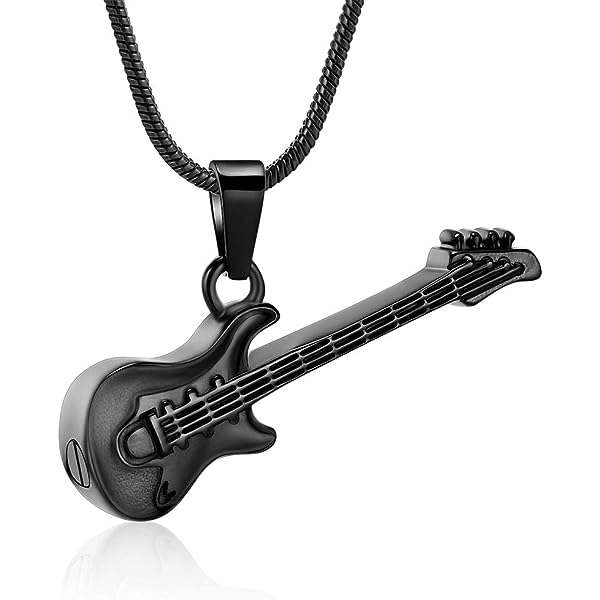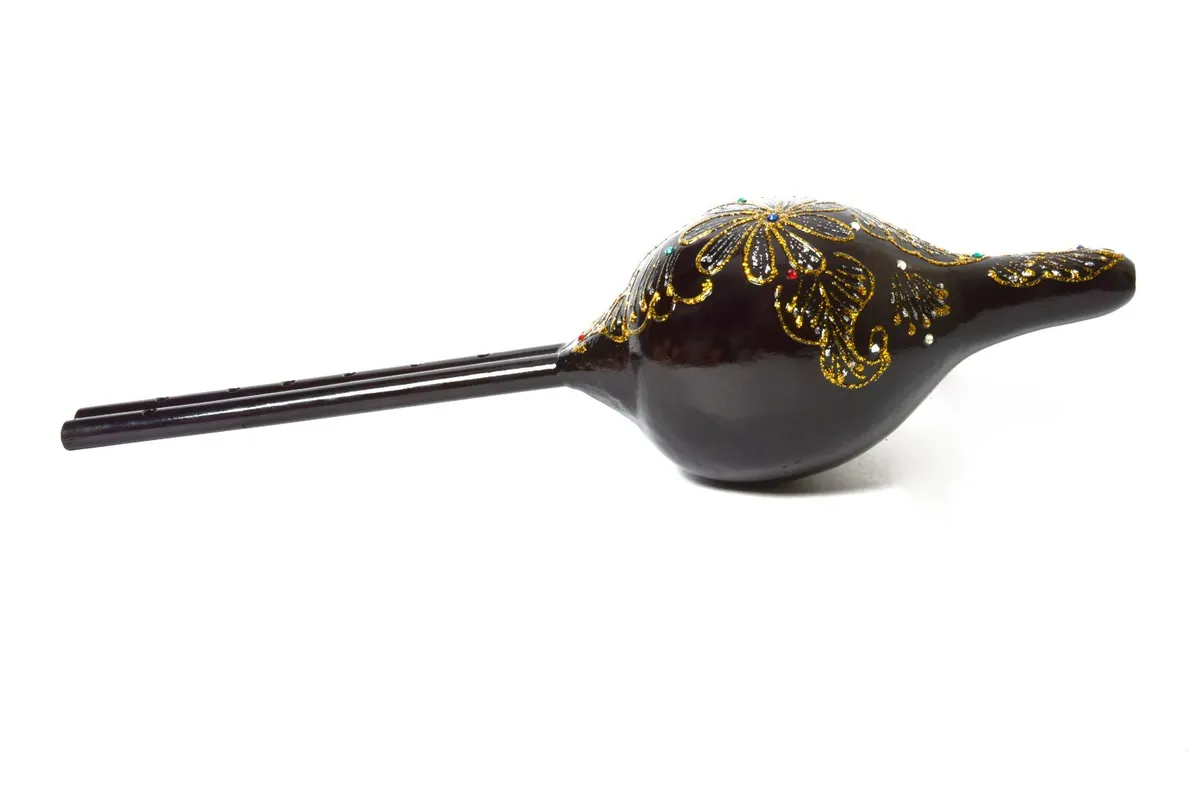Music has been a cornerstone of human culture for centuries, transcending geographical, linguistic, and cultural boundaries. Within the realm of music, the creation of musical instruments has evolved into an art form in itself.
While the primary focus has often been on sound production and aesthetics, an intriguing trend has emerged: the incorporation of precious and semi-precious jewels into musical instruments. This fusion of craftsmanship and artistry not only enhances the visual appeal but also offers potential sonic improvements. In this article, we delve into the history, rationale, and effects of using jewels in musical instruments.
A Historical Prelude
The idea of adorning musical instruments with jewels dates back to ancient civilizations. Royalty and aristocrats would often commission instruments studded with gemstones as a display of opulence. These instruments were considered both functional and exquisite works of art, embodying the culture and affluence of the time.
The use of jewels in musical instruments extended beyond decorative purposes. Some cultures believed that certain gemstones possessed metaphysical properties that could positively influence the sound produced. This notion added a spiritual dimension to the practice, making it more than just an aesthetic choice.
The Rationale Behind Gem-Embedded Instruments
Aesthetic Enhancement
The most obvious reason for embedding jewels in musical instruments is the aesthetic enhancement they offer. The glint of polished gemstones against the backdrop of polished wood or metal creates a visually captivating juxtaposition. This fusion of natural and man-made beauty elevates the instrument from a mere tool of sound to a work of art.
Symbolism And Identity
Jewels hold significant cultural and symbolic meanings across the world. Incorporating these gemstones into musical instruments can imbue them with deeper significance. For example, a musician might choose to embed a gem that represents creativity or spirituality, aligning the instrument with their personal journey and identity.
Sound And Resonance
Beyond the surface-level appeal, proponents of jewel-embedded instruments propose that certain gemstones can influence the acoustics and resonance of the instrument. Gems with specific mineral compositions might affect the vibration and transmission of sound waves, leading to subtle changes in tonal quality. While scientific research on this topic is limited, anecdotal evidence suggests that gemstones like quartz and amethyst might impact sound characteristics.
Using Jewels In Musical Instruments - In Practice
Pianos
Pianos, with their large and intricate structures, have been a canvas for gemstone incorporation. Some pianos feature keys adorned with tiny embedded jewels, creating a dazzling effect as fingers dance across the keyboard. While the direct sonic impact is debatable, the visual spectacle undoubtedly adds an element of grandeur to performances.
Stringed Instruments
Violins, cellos, and guitars have also embraced the trend. Gemstones are often set into the fingerboards, tailpieces, or even the bodies of these instruments. While the effect on sound remains contentious, musicians appreciate the instruments' uniqueness and the personal resonance they hold.
Wind Instruments
Even wind instruments have not escaped this trend. Flutes and saxophones have been crafted with keys adorned by jewels. While the impact on sound projection is less pronounced, these instruments become conversation starters, embodying the marriage of craftsmanship and artistic expression.
The Debate And Future Prospects
The use of jewels in musical instrumentsremains a topic of debate among musicians, artisans, and scientists. Skeptics argue that any sonic changes are likely negligible, and the practice may come across as ostentatious. However, proponents contend that the beauty and symbolism associated with gem-embedded instruments create an emotional connection that enhances the player's experience.
As we look to the future, advancements in material science and acoustic research might shed light on the potential influence of gemstones on sound production. Whether the impact is psychological, symbolic, or truly acoustic, the tradition of embedding jewels in musical instruments showcases the evolving relationship between music and artistry.
Exploring Gemstone Selection
The choice of gemstones for embedding in musical instruments is a delicate and purposeful process. Different gemstones are believed to carry distinct energies and vibrations, which can potentially influence the instrument's resonance. Here are a few examples of gemstones commonly used and their associated attributes:
- Amethyst:Known for its calming properties, amethyst is often associated with spiritual growth and creativity. When integrated into an instrument, it might create an environment conducive to artistic expression and introspection.
- Rose Quartz:This gentle pink gemstone is often linked to love, compassion, and harmony. Instruments adorned with rose quartz might evoke emotions of warmth and connection, adding a layer of emotional depth to musical performances.
- Clear Quartz:Considered a master healer in the world of crystals, clear quartz is believed to amplify energies and intentions. When placed within an instrument, it could potentially enhance the instrument's natural resonance and project sound with greater clarity.
- Lapis Lazuli:With its deep blue hue often reminiscent of the night sky, lapis lazuli is associated with truth and wisdom. Instruments featuring this gem might inspire musicians to create melodies that resonate with profound insights.
Craftsmanship And Collaboration
The integration of gemstones into musical instruments is not a task taken lightly. It requires a skilled collaboration between artisans, gemologists, and musicians. The placement of the gemstones must be carefully considered to ensure they don't interfere with the instrument's functionality or alter its balance.
Artisans working on jewel-embedded instruments often pay meticulous attention to detail, ensuring that the gemstones are seamlessly integrated into the instrument's design. The choice of metalwork, engravings, and other embellishments contributes to the overall aesthetic, creating an instrument that is both visually stunning and musically functional.
Contemporary Perspectives
In the modern era, the use of jewels in musical instruments continues to evolve. While tradition and symbolism still play a significant role, contemporary musicians and instrument makers are also exploring innovative ways to incorporate gemstones. Some opt for minimalist designs, using discreetly embedded gemstones that only reveal themselves upon closer inspection. This approach caters to those who appreciate subtlety and intrigue.
Additionally, advancements in technology allow for precise acoustic analysis. Musicians and scientists can now measure and compare the sonic characteristics of instruments with and without embedded gemstones. While the results may not be conclusive, this empirical approach adds a new dimension to the ongoing discussion about the influence of gemstones on sound production.
The Ethical Considerations
While the concept of embedding jewels in musical instruments offers a captivating blend of aesthetics and acoustics, it's important to address the ethical implications associated with the use of precious gemstones. The mining and trade of gemstones can often involve human rights abuses, environmental degradation, and funding of conflicts in certain regions.
Musicians and instrument makers who choose to incorporate gemstones into their creations are increasingly conscious of these issues. Many are opting for ethically sourced gemstones, which are extracted and traded in ways that prioritize human rights, fair labor practices, and environmental sustainability. This shift towards ethical sourcing aligns with a broader global movement toward responsible consumption and production.
The Art Of Collaboration
The integration of jewels into musical instruments often goes beyond the skills of a single individual. It requires collaboration between craftsmen, musicians, gemologists, and even designers. This collaborative effort can lead to innovative designs that seamlessly incorporate gemstones while respecting the instrument's functional integrity.
Musicians who invest in jewel-embedded instruments also become part of this collaborative process. Their input and preferences contribute to the final design, allowing for a personalized connection between artist and instrument that goes beyond the traditional considerations of playability and tonality.
Inspiring Future Generations
The use of jewels in musical instruments not only honors cultural traditions but also serves as an inspiration for future generations of musicians and artisans. The melding of centuries-old practices with contemporary techniques sparks creativity and encourages individuals to think beyond conventional boundaries.
Young musicians, upon encountering instruments adorned with gemstones, might be drawn to explore the interplay between aesthetics and sound. This curiosity could lead to innovative research, bridging the gap between art and science and potentially uncovering new insights into the relationship between materials and music.
The Sonic Legacy
Regardless of the ongoing debate regarding the impact of gemstones on sound quality, one undeniable effect of jewel-embedded instruments is their contribution to the sonic legacy. Each instrument becomes a time capsule, representing a specific moment in the evolution of music and craftsmanship. As these instruments are played and passed down through generations, they contribute to a rich tapestry of musical history, connecting performers and listeners across time.
Preserving The Essence
As the practice of embedding jewels in musical instruments evolves, one challenge remains: how to preserve the essence of the instrument's sound while incorporating additional elements. Instrument makers and musicians alike are keenly aware of the delicate balance between ornamentation and functionality. The goal is to enhance the instrument's visual appeal and potential sonic qualities without compromising its core purpose – creating beautiful music.
A Glimpse Into The Future
As technology advances and our understanding of materials deepens, the potential applications of jewel-embedded instruments could expand further. Researchers might develop new methods to analyze the acoustic properties of gemstones with greater precision, shedding light on their true impact on sound production. This could lead to the creation of instruments that are meticulously designed to produce specific tonal qualities, pushing the boundaries of musical expression.
Virtual reality and augmented reality technologies could also play a role in the evolution of jewel-embedded instruments. Musicians and audiences could experience these instruments in immersive digital environments, where the visual and sonic aspects combine to create an otherworldly experience. Such technologies might even allow for interactive exploration of an instrument's sonic characteristics, enhancing our appreciation for the intricate relationship between gemstones and music.
Bridging Cultures And Traditions
The practice of embedding jewels in musical instruments is not confined to any specific culture or tradition. It is a universal language that transcends borders and speaks to the shared human desire for beauty and artistic expression. Musicians from diverse backgrounds can find common ground in the appreciation of these intricately adorned instruments, fostering cross-cultural collaborations and exchanges.
Instruments adorned with gemstones could serve as cultural ambassadors, carrying the essence of different traditions to audiences worldwide. This fusion of aesthetics and sound has the potential to spark conversations and connections that bridge gaps and foster a deeper understanding of our global heritage.
An Invitation To Explore
The allure of jewel-embedded instruments is an invitation to explore the realms of music, craftsmanship, and symbolism. Whether you're a musician seeking an instrument that resonates with your identity, an artisan pushing the boundaries of design, or a listener captivated by the marriage of beauty and sound, these instruments offer a unique avenue of exploration.
Next time you find yourself in the presence of a jewel-embedded instrument, take a moment to appreciate the intricate craftsmanship, the historical echoes, and the potential sonic mysteries it holds. The legacy of these instruments is a reminder that music is not just about what we hear; it's a multisensory journey that invites us to immerse ourselves in the rich tapestry of human creativity.
The Resonance Of Gem-Embedded Instruments - Impact On The Jewelry Industry
The harmonious fusion of gemstones and musical instruments extends its influence beyond the world of music and craftsmanship. This intriguing collaboration has also left an indelible mark on the jewelry industry, transforming the way precious and semi-precious gemstones are perceived, sought after, and incorporated into adornments. Let's explore how the use of jewels in musical instruments has resonated within the jewelry landscape.
Redefining Gemstone Aesthetics
Traditionally, gemstones have adorned jewelry, shining brilliantly in rings, necklaces, and earrings. However, the integration of these stones into musical instruments has redefined the perception of their aesthetic value. As gems find their way onto pianos, violins, and other instruments, they become more than embellishments – they transform into living, resonating components that elevate the instruments' visual appeal. This reimagining of gemstones' purpose has spurred jewelry designers to explore unconventional ways to incorporate gems into their creations, inspiring a shift from static ornamentation to dynamic elements that engage with the world around them.
A Bridge Between Worlds
The marriage of gems and musical instruments has blurred the lines between two seemingly distinct worlds: music and jewelry. This convergence has piqued the interest of musicians, collectors, and jewelry enthusiasts alike, creating a bridge between two artistic realms. As individuals drawn to gem-embedded instruments encounter these captivating pieces, their curiosity extends to gemstone jewelry that carries a similar allure. The jewelry industry has seized this opportunity to create pieces that echo the aesthetics of these instruments, forging a connection between wearables and musical craftsmanship.
A Harmonious Interlude - Linking Jewel-Embedded Instruments And The Jewelry Industry
In the grand symphony of creativity and innovation, the marriage of gemstones and musical instruments has struck a chord that resonates not only in the world of music but also within the jewelry industry. This unexpected fusion has sparked a harmonious interlude, forging connections between two seemingly disparate realms and giving rise to a host of captivating possibilities.
The Artistry Nexus
At the heart of this convergence lies a shared emphasis on artistry and craftsmanship. The meticulous integration of gemstones into musical instruments has ignited a renewed appreciation for the intricate details that elevate a creation from functional to extraordinary. This newfound appreciation has naturally extended to the jewelry industry, where artisans have been inspired to explore novel techniques and innovative designs that mirror the gem-embedded instruments.
As jewelers venture beyond conventional gem-setting practices, they draw inspiration from the intricate metalwork, imaginative gem placements, and unconventional combinations that characterize these instruments. This exchange of creative methodologies has established an artistry nexus, a point of connection where the worlds of music and jewelry blend seamlessly.
Collaborative Crescendo
The enchanting melodies produced by jewel-embedded instruments have harmoniously echoed through the corridors of collaboration. Musicians, instrument makers, and jewelry artisans have discovered common ground in their pursuit of creating exquisite, personalized pieces that evoke emotions and tell stories. This collaborative crescendo has not only enriched their respective crafts but has also opened doors to exciting cross-industry connections.
The symphony of collaboration extends its melodic notes to the audience as well. As musicians and patrons of fine jewelry find themselves captivated by the allure of gem-embedded instruments, they are drawn into an interconnected world of aesthetic appreciation. This interconnectedness fosters a demand for complementary jewelry pieces that mirror the beauty and symbolism of these instruments.
An Overture Of Symbolism
Incorporating gemstones into musical instruments layers them with symbolism and personal resonance. This potent infusion of meaning echoes the ethos of the jewelry industry, where each piece holds its own narrative and significance. Just as gem enthusiasts seek stones that align with their emotions and values, musicians are drawn to instruments that reflect their artistic identity and journey.
This shared emphasis on symbolism and individuality has prompted a revival in custom-designed jewelry. Jewelers now craft pieces that not only highlight the intrinsic allure of gemstones but also encapsulate profound emotions and stories. The practice of embedding gemstones in instruments has reaffirmed the notion that jewelry is an art form that transcends mere adornment—it's a wearable embodiment of one's unique expression and connection to the world.
An Encore Of Innovation And Inspiration
The captivating melody of jewel-embedded instruments has ignited an encore of curiosity and inspiration. This captivating duet has not only piqued the interest of music and jewelry enthusiasts but has also driven a renewed demand for exquisite and extraordinary gemstones. As audiences become enamored with these instruments, the industry adapts by exploring innovative sourcing methods, leading to a transformation in gemstone market dynamics.
Furthermore, the trend of jewel-embedded instruments has prompted a reimagining of jewelry designs. Designers are experimenting with unconventional gemstone pairings, imaginative metalwork, and novel materials to craft pieces that resonate with modern sensibilities. This innovative spirit has breathed new life into the jewelry industry, inspiring a generation of artists to push the boundaries of creativity.
A Harmonious Synchrony
In the grand symphony of artistic expression, the convergence of jewel-embedded instruments and the jewelry industry creates a harmonious synchrony that resonates with the creative spirit within us all. This fusion is a reminder that beauty knows no boundaries, and innovation can emerge from unexpected intersections. As musicians and artisans continue their exploration, the legacy of this unique collaboration serves as an enduring testament to the boundless potential of human creativity.
Learn more about the harmonious fusion of music and creativity in Multiplayer Piano's article about the richest pianist.
People Also Ask
What Metals Are Musical Instruments?
Musical instruments can be crafted from a wide range of metals, each with its own unique properties that contribute to the instrument's sound and functionality. Some common metals used in the construction of musical instruments include:
- Brass:Brass instruments, such as trumpets, trombones, and tubas, are typically made from brass, a metal alloy consisting primarily of copper and zinc. The specific composition of the brass alloy can impact the instrument's tone and playability.
- Silver:Silver is often used for flute and piccolo head joints and some parts of brass instruments. The density and resonance of silver contribute to the instrument's timbre.
- Copper:Copper is used for various percussion instruments like cymbals, gongs, and some types of drums. Its vibrant sound and malleability make it suitable for creating resonant percussion surfaces.
- Aluminum:Aluminum is employed in modern xylophones, marimbas, and other percussion instruments due to its lightweight nature and ability to produce bright, clear tones.
- Steel:Steel is commonly used in various percussion instruments, including steel drums (steel pans) and some types of hand percussion like steel tongue drums.
- Bronze:Bronze, an alloy of copper and tin, is found in bells and gongs. Its resonance and durability make it well-suited for producing sustained and rich tones.
- Gold:While less common due to its cost, gold is occasionally used for certain parts of instruments like trumpet mouthpieces. Gold's density and tonal characteristics can influence an instrument's sound.
What Are The 4 Instruments In A Band?
In a traditional band setup, there are four primary instrument families that make up the core ensemble:
- Woodwinds:This family includes instruments like the flute, clarinet, saxophone, and oboe. Woodwind instruments produce sound through the vibration of a reed or by blowing across an open hole.
- Brass:Brass instruments, including the trumpet, trombone, French horn, and tuba, create sound by buzzing the lips into a cup-shaped mouthpiece.
- Strings:The string family comprises instruments like the violin, viola, cello, and double bass. These instruments produce sound by vibrating strings that are bowed, plucked, or struck.
- Percussion:Percussion instruments cover a wide range, from drums and cymbals to xylophones and maracas. They produce sound by striking, shaking, or scraping the instrument's surface.
What Is The Queen Of Instruments In Music?
The term "queen of instruments" is often used to refer to the pipe organ. The pipe organ is considered one of the most complex and versatile musical instruments ever created. It is capable of producing a vast array of sounds and textures, from delicate and ethereal to powerful and majestic.
The pipe organ's grandeur, its ability to replicate the sounds of various instruments and ensembles, and its commanding presence make it deserving of the title "queen of instruments." Its historical significance, its role in sacred and classical music, and its impact on the sonic landscape of large spaces have solidified its place as one of the most revered instruments in the world of music.
Conclusion
The use of jewels in musical instruments is a phenomenon that has stood the test of time, evolving from ancient displays of opulence to contemporary expressions of artistry and innovation. The interplay between gemstones and music transcends the physical properties of materials, reaching into the realms of culture, emotion, and symbolism.
As musicians, artisans, and researchers continue to explore the possibilities of jewel-embedded instruments, they contribute to a legacy that unites generations and enriches our collective appreciation for music. The harmonious blend of gems and melodies is a testament to the boundless human imagination and the enduring pursuit of beauty in all its forms.
